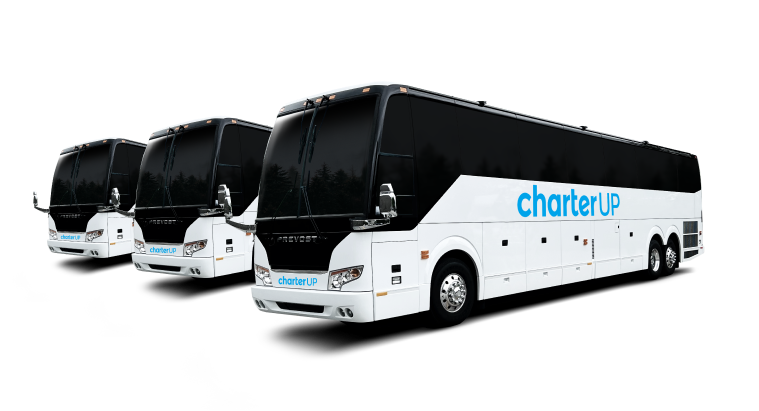20 Best Suggestions For Deciding On Event Shuttle Websites
20 Best Suggestions For Deciding On Event Shuttle Websites
Blog Article
Employee Shuttle Transportation Ten Tips For Arranging And Covering The Route
Here are 10 of the best tips on routing planning and coverage for shuttle services for employees:
1. Understand Employee Needs
Focus groups and surveys may be used to discover where employees live and their preferences for times to travel. Also, any special requirements (like accessibility needs) will be identified. This information is essential for designing routes to maximize the number of participants and their satisfaction.
2. Examine traffic patterns
Traffic patterns and peak hours within your company must be analyzed. Utilize tools like Google Maps traffic information to find congested routes and avoid them during shuttle times. This can reduce delays and ensure the smoothest journey.
3. Utilize Technology
Use software to plan routes that optimizes routes on the basis of actual-time information on traffic patterns and schedules of employees. Shuttle service apps allow you to adjust routes automatically to ensure that the service is as efficient as possible.
4. Establish Strategic Pickup Points
Locate central areas where most people are able to quickly access them. Consider picking locations close to major transportation hubs and residential zones. This will ensure maximum coverage and prevent the need to extend the route.
5. Make a flexible schedule
Create a scheduling system that allows for a variety of employee hours. The availability of shuttles during peak hours of departure and arrival as well off-peak, can increase participation and accommodate the various shifts.
6. Install a Loop Feedback
Your employees and clients should be encouraged to provide feedback regarding shuttle services. Utilize this feedback to make changes to shuttle routes schedules, schedules, and pick-up places. By regularly assessing the satisfaction of employees you can maintain a service that is adapted to their needs.
7. Monitor and Analyze Usage Information
Keep track of shuttle usage to find the most used routes as well as those that require adjustment. These data is used to make educated decisions about the best ways to improve services and the best places to allocate resources.
8. Promoting carpooling and ridesharing
Encourage employees using a carpooling scheme in conjunction with shuttle services. This will reduce the need for shuttles and give more flexibility. Ridesharing apps are an excellent method to cut costs.
9. Consider Environmental Impact
Shuttles that are energy efficient can be utilized to build routes that emit little carbon. Encourage the utilization of electric or hybrid vehicles as part of your shuttle service. This is not just an effective way to promote sustainability but also helps employees who are environmentally conscious.
10. Ensure safety and compliance
Check that shuttle services follow safety rules and legal requirements. This includes periodic maintenance checks for vehicles, ensuring drivers are certified and trained, and providing insurance coverage. Transport planning should consider security first on its priorities.
With these methods by incorporating these strategies, you can build an efficient employee shuttle system to meet the needs of your employees while ensuring the safety of your employees and maximizing resource utilization. Have a look at the recommended employee transportation for site info including shuttle for the airport, shuttle to and from airport, car service pick up, car service to and from airport, shuttle to lax, reliable transportation, private car service near me, san francisco airport shuttle service to hotels, airport rides near me, miami airport transportation and more.
Top 10 Suggestions On How To Budget And Calculate The Cost Of Corporate Transportation Service
Here are some top ideas on cost and cost aspects in a corporate transportation service.
1. Conduct a Comprehensive Analysis of Costs
Start by conducting a thorough cost analysis for all elements of your transportation services. This includes car rentals, leasing expenses, as well as costs for fuel, the salaries of drivers and maintenance, insurances, and other fees. Understanding the total cost of a vehicle can assist in establishing the budget.
2. Budget Clarity
Create a budget plan which outlines how much your organization is prepared to allocate for transportation. This framework needs to include all expenses outlined, but also allow for some flexibility to be able to handle unexpected costs. A budget can assist you in making better choices, and it will ensure that your transportation expenses are in check.
3. Explore a variety of transportation options
Examine the different transportation options offered for the event like shuttles, buses vans, vans, or rideshare services. Estimate the costs for every transportation option. Take into account aspects like convenience, comfort, and capacity. The transportation budget can be optimized by selecting the option that is most economical and is able to meet the participants' needs.
4. Transport Providers: Conclude contracts
Discuss your options with the chosen transportation provider to negotiate the lowest costs. Numerous transportation companies provide discounts for large-scale bookings and corporate events. A good relationship with service providers can lead you to get better rates as well as improved services, which will ultimately aid your budget.
5. Make plans for fuel costs in advance
Costs for fuel are a major factor in transportation expenses. Consider the distance to the venue of the event and the anticipated number of trips required. If possible, negotiate efficient fuel vehicles with the transportation provider to minimize costs.
6. Include Contingency Funds
Allocate a portion of your budget to contingency money to cover unexpected expenses. Transport can be unpredictable with possible issues such as breakdowns of vehicles or the need for additional trips needed. Contingency funds will ensure that you are able to handle these scenarios without sacrificing the quality of service.
7. Packages and discounts for groups are offered.
Transport companies may offer discounts for groups or package deals. Many companies provide reduced rates for large groups, or corporate events, which could result in significant savings. If you are interested in discounted packages, inquire about additional services, such as on-site coordination and extra vehicles.
8. Keep track of your expenses and monitor them
Maintain a close watch on all transportation-related expenses throughout the planning and execution phases. Utilize spreadsheets or budgeting software to keep track of your expenses in real-time. Track expenses to identify areas where you can save.
9. Collect feedback for future budgeting
Following the event, collect feedback from attendees regarding their transportation experience and any associated costs. This information can be used to gain insight into the effectiveness of the transport service and guide future budget choices. Understanding what went well and what didn't assist you in planning your budget for future events.
10. Assess the your Total Cost of Ownership
When considering transportation options, evaluate the total cost of ownership (TCO) for the vehicle. This includes not only the purchase or rental price but also the ongoing costs such as maintenance, insurance, and depreciation. Knowing TCO lets you make informed decisions by balancing initial costs and future financial consequences.
By following these tips, organizations can effectively manage costs and make informed budget choices for corporate event transportation services. Budget planning is crucial in order to make sure that transportation needs of an event are met however, it can also help in making the event enjoyable by allowing attendees to concentrate on the event and not the logistics. A well-planned budget and cost management will boost the credibility of your business and demonstrate that you are committed to a high level of efficiency and accountability. Take a look at the top corporate event transportation hints for site examples including transport planning, best transport, business logistics, vehicular transport, group transport, logistics near me, services and logistics, companies that transport, company transport, service transportation company and more.